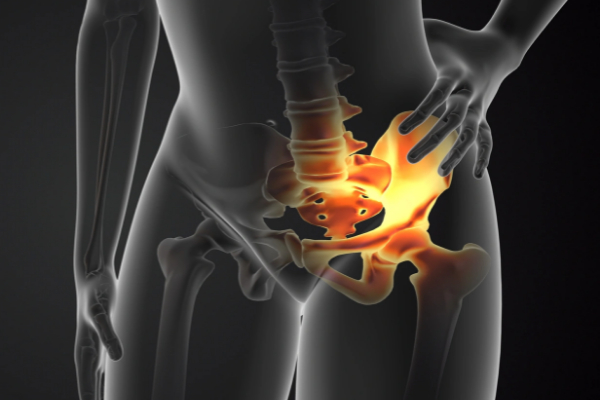Hip Labral Tear
A labral tear is a common cause of hip pain, especially in active individuals and athletes. The labrum is a ring of cartilage that surrounds the hip socket, helping to stabilise the joint and provide a smooth surface for movement.
When the labrum is torn, patients often experience pain, stiffness, and reduced mobility. In many cases, labral tear surgery (hip arthroscopy) is recommended to repair or remove the damaged tissue and restore normal hip function.

What is a Hip Labral Tear?
The hip labrum acts as a seal around the ball-and-socket joint, keeping the joint stable and reducing friction. Tears can develop due to:
- Repetitive sporting movements
- Hip impingement (femoroacetabular impingement, or FAI)
- Trauma or injury
- Degenerative changes over time
Symptoms of a Labral Tear
Typical signs of a hip labral tear include:
- Deep groin or hip pain, often sharp or catching
- Clicking, locking, or grinding sensation in the hip
- Stiffness and restricted range of motion
- Pain during sport, prolonged sitting, or twisting movements
Diagnosis of Labral Tears
A consultant hip surgeon will usually recommend:
- Physical examination to assess hip mobility and impingement signs
- MRI scan (with contrast dye) to identify labral damage
- X-rays to rule out arthritis or bone abnormalities
Treatment Options for Labral Tears
Non-Surgical Management
Some patients may benefit from non-surgical treatment, including:
- Rest and activity modification
- Anti-inflammatory medication
- Physiotherapy to strengthen hip and core muscles
- Corticosteroid injections for pain relief
Surgical Treatment
If symptoms persist despite conservative measures, labral tear surgery (hip arthroscopy) is often the best option to restore hip function and prevent further joint damage.
Labral Tear Surgery Explained
Before
- MRI or CT scans used to plan the procedure
- Pre-operative physiotherapy may be recommended
- Discussion of whether labral repair or debridement (trimming) is most suitable
During
- Performed under general anaesthetic
- Hip arthroscopy (keyhole surgery) using small incisions
- Torn labrum either:
- Repaired with sutures if suitable
- Debrided (trimmed or smoothed) if repair is not possible
- If hip impingement is present, bone reshaping may also be carried out
After
- Patients usually go home the same day
- Crutches for 1–2 weeks
- Individualised physiotherapy programme starts soon after surgery
Recovery After Labral Tear Surgery
Short-Term Recovery
- Crutches for walking support during the first 1–2 weeks
- Pain and swelling controlled with medication and ice therapy
Rehabilitation Timeline
- 0–6 weeks: Focus on healing, gentle range of motion exercises
- 6–12 weeks: Begin strengthening exercises
- 3–6 months: Gradual return to sport-specific activity
- 6–12 months: Full return to competitive sport for most patients
Recovery times vary depending on the extent of the tear and whether a repair or debridement was performed.

Risks and Complications
Labral tear surgery is generally safe, but possible risks include:
- Infection
- Nerve irritation or numbness
- Hip stiffness
- Failure of repair, requiring revision surgery
- Ongoing hip pain if arthritis is present
Why Choose Mr Mark Webb for Labral Tear Treatment
When you choose Mr Mark Webb for your hip labral tear treatment, you benefit from:
-
An accurate diagnosis using advanced imaging (MRI, CT) and hip joint assessment to identify the type, location, and extent of your tear
-
Specialist arthroscopic repair that aims to preserve the labrum when possible and address underlying causes such as femoroacetabular impingement (FAI) to prevent future damage
-
A personalised treatment plan tailored to your pain, activity level, and goals (sports, daily life)
-
Access to structured rehabilitation programmes to restore hip range of motion, strength, and stability, helping you recover safely
-
The best chance of reducing pain, improving hip function, and protecting long-term joint health
Frequently Asked Questions
What is a hip labral tear, and how do I know if I have one?
The labrum is a ring of cartilage lining the socket of your hip joint. It helps with stability, cushioning, and smooth movement. A tear can occur due to injury, impingement (when bones rub abnormally), or degeneration. You might feel groin pain, clicking, catching, stiffness, or pain with certain movements or deep bending.
Can a labral tear heal on its own, or will I need surgery?
Most labral tears do not heal fully by themselves because cartilage has limited blood supply. Mild symptoms may improve with rest, activity modification, physical therapy, and anti-inflammatory treatments. If pain is severe, persistent, or impacting your quality of life, surgery (typically arthroscopic repair) is often recommended.
What does surgery involve, and will it also address underlying issues?
Surgery for labral tears usually uses hip arthroscopy (key-hole surgery). The surgeon can repair the torn part (using sutures or anchors), trim damaged tissue (debridement) or in some cases reconstruct the labrum. If you have impingement or abnormal bone shape (FAI), the surgeon might also reshape the bone to stop it rubbing and causing further damage.
What is the recovery timeline, and when can I return to my daily life or sport?
Recovery depends on how big/complex the tear was and what additional procedures were done (e.g. bone reshaping). Generally:
-
Physical therapy begins soon after surgery to reduce swelling and restore motion.
-
You may use crutches for a few weeks.
-
Everyday activities often resume gradually over a few months. Many patients see major improvements by 4-6 months, but full return to high-impact sports may take up to 9 months.
What are the potential risks or outcomes I should be aware of?
Some risks include: infection, nerve irritation, stiffness, or that the repair may not heal fully. There’s also a chance of ongoing pain if there’s cartilage damage or delayed diagnosis. If underlying problems like impingement aren’t addressed, further joint damage might occur over time.

